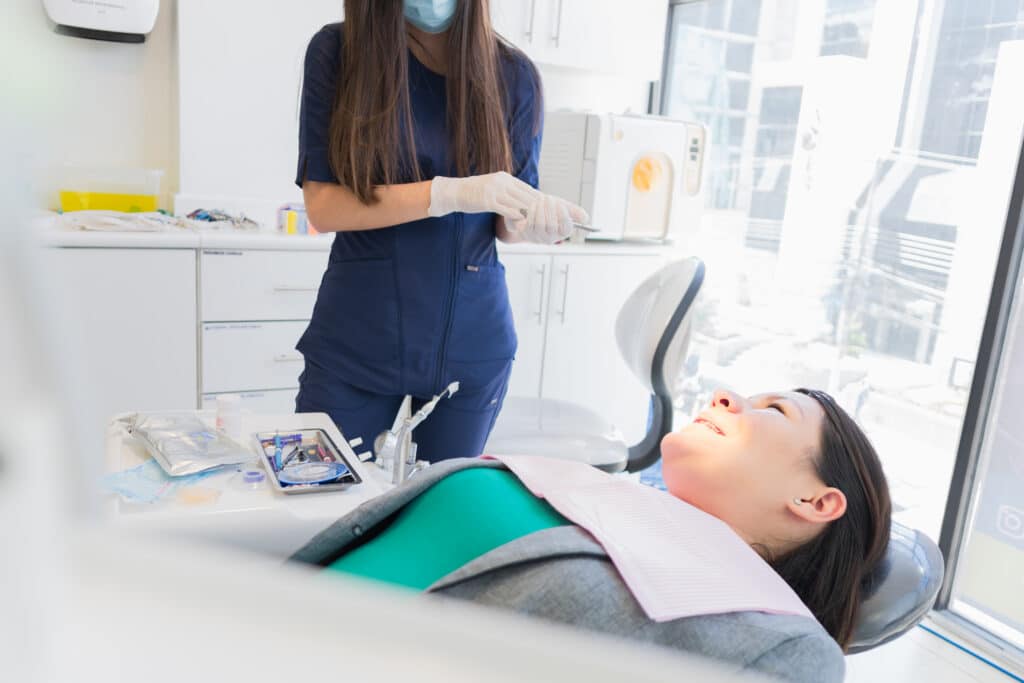Going to the dentist can be scary for many people. The sounds, smells, and even the thought of dental tools can make some of us very nervous. If you feel this way, you are not alone. Lots of people feel stressed about visiting the dentist, but sedation dentistry can help. This method uses medicine to help you feel calm and relaxed during your visit.
Sedation dentistry can make your dental experience much easier and more comfortable. Whether you need a simple check-up or a more complicated procedure, sedation can help you stay relaxed. This helps you get the dental care you need without feeling scared or anxious. At Pickering Dental Services, we want to make sure that your visit is as stress-free as possible.
By learning more about sedation dentistry, you can make the best choice for your dental care. In the following sections, we will explain what sedation dentistry is, the different types, its benefits, and what you can expect during and after your appointment. This information will help you understand how sedation can improve your dental experience and keep your smile healthy.
What Is Sedation Dentistry?
Sedation dentistry uses medication to help patients relax during dental procedures. It’s designed for people who feel nervous or fearful about visiting the dentist. With sedation, you can receive dental treatments in a calm and stress-free manner. The goal is to make the experience as comfortable as possible, so you can get the dental care you need without feeling anxious.
There are different levels of sedation, from mild relaxation to being almost asleep. The type of sedation used depends on the procedure and your level of anxiety. For instance, mild sedation might be used for a simple cleaning, while a deeper level might be used for more complex procedures. Sedation dentistry can make a big difference in your dental experience, helping you to relax and feel at ease during your visit.
Types of Sedation Used in Dentistry
1. Nitrous Oxide (Laughing Gas)
Nitrous oxide is one of the most common types of sedation used in dentistry. It’s a gas that you breathe in through a mask placed over your nose. It helps you feel relaxed and can wear off quickly after your treatment. This means you can usually drive yourself home afterward.
2. Oral Sedation
Oral sedation involves taking a pill, usually about an hour before your appointment. The pill makes you drowsy and relaxed but still awake and able to respond to instructions. The effects can last a bit longer, so you may need someone to drive you home after your dental visit.
3. IV Sedation
IV sedation is administered through a vein in your arm. It works quickly and allows the dentist to adjust the level of sedation during the procedure. This type of sedation is often used for more intense dental treatments. You will need someone to take you home afterward as the effects take a while to wear off.
4. General Anaesthesia
General anaesthesia is the deepest form of sedation and makes you completely unconscious. It’s usually reserved for very complex procedures or for those who can’t tolerate other forms of sedation. You will need to arrange for transportation and might feel groggy for a few hours after the treatment.
By understanding the different types of sedation available, you can make an informed decision about what will best meet your needs. Each type offers various benefits that can help reduce your dental anxiety and make your visit more comfortable.
Benefits of Sedation Dentistry
Sedation dentistry offers several benefits that make it an excellent option for many patients. One of the primary benefits is the reduction of anxiety and fear. For those who feel nervous about dental visits, sedation can make the entire experience much more comfortable. You can relax and feel at ease, allowing the dentist to complete the needed treatments without any stress or discomfort for you.
Another benefit is that sedation can make the procedure seem quicker. When you’re relaxed, time passes faster, and you may feel like the treatment was over in no time. This is especially helpful for longer procedures, which can be hard to sit through if you are anxious. Sedation also helps reduce any discomfort or pain during the procedure, as you will be in a relaxed state, making it easier for the dentist to perform their tasks efficiently.
What to Expect During and After Your Sedation Dentistry Appointment
Before your appointment, we will discuss the type of sedation that best fits your needs. You will receive instructions on how to prepare, such as avoiding food and drinks for a certain period. On the day of the appointment, you will be given the sedative, whether it’s an inhaled gas, oral medication, or IV sedation, and allowed time for it to take effect before the dental procedure begins.
During the procedure, you will be monitored to ensure your comfort and safety. If you are under lighter sedation, you will stay awake but feel very relaxed. If you undergo deeper sedation, you may not remember much of the procedure afterward. After the treatment, you will need some time to recover from the effects of the sedation. Depending on the type of sedation used, you may feel a bit groggy or tired, so it’s important to have someone with you to drive you home.
Final Thoughts
Sedation dentistry can transform your dental visits from stressful occasions into calm and comfortable experiences. By understanding what sedation dentistry is, the different types available, and their numerous benefits, you can make an informed decision about your dental care. Knowing what to expect during and after your appointment can further alleviate any anxieties you might have.
At Pickering Dental Services, we are committed to making your dental visits as pleasant and stress-free as possible. Our team is here to help you choose the best sedation option and provide the highest quality dental care. If you’re interested in learning more about sedation dentistry or would like to schedule an appointment, contact us today. Let’s work together to keep your smile healthy and bright while ensuring your comfort every step of the way.



